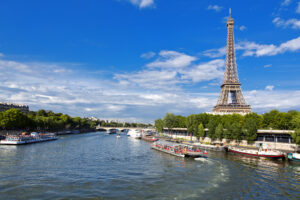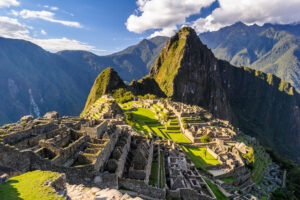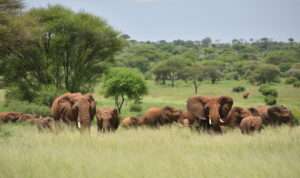Most popular World Heritage sites on each continent

This week we celebrate World Heritage day and the many wonderful UNESCO World Heritage sites scattered across the globe. This summer, new sites will join the list after the pandemic put a pause on the 44th session of the World Heritage Committee in 2020. Only recently visited by humanity, Antarctica doesn’t have any entries on the list (though New Zealand’s sub-Antarctic islands made the cut). These are the most popular World Heritage sites on each continent. The best part is you can visit several of these now or in the near future. Peru, Tanzania and U.S. national parks are open, and France is finalizing plans to welcome vaccinated travelers starting in May. Consult your travel advisor for details on COVID protocols in each destination.
Forbidden City

Officially part of the Imperial Palaces of the Ming and Qing Dynasties in Beijing and Shenyang on the list, the Forbidden City was a seat of power in China for about 500 years. The complex was home to 24 emperors, the last being Puyi, who abdicated in 1912. Nearly 10,000 rooms in the Forbidden City are decorated with priceless artworks and surrounded by perfectly manicured gardens and provide valuable insight into the courtly life of some of the most powerful dynasties the world has seen.
Great Smoky Mountains

North America’s entrant attracts more than 11 million visitors in a normal year, nearly twice the amount of people who visit the Grand Canyon. With all kinds of fluctuations in elevation, Great Smoky Mountains National Park boasts a wide diversity of plant and animal life. There’s some type of flower in bloom basically year-round, and synchronous fireflies put on a natural light show around May and June. The 11-mile Cades Cove loop features historic buildings and a variety of wildlife and is the most popular area of the park.
Banks of the Seine

Though Italy ties with China for the most World Heritage sites in an individual country, France has bragging rights for Europe’s most visited site, right in the heart of Paris. There are so many marvelous buildings running up and down the banks of the river that they all combine into one super site. A nice walk can take you by Notre-Dame, the Louvre, the Eiffel Tower, the Pont Neuf, Place de la Concorde and other testaments to the architectural and historical significance of the City of Light.
Sydney Opera House

The most recently created entry on this list, this icon of Australia in Sydney Harbour got its signature shell design from Danish architect Jørn Utzon, who solved the problem of how to make the shells a reality after watching an orange being peeled. The visionary design was ahead of its time, and Utzon grew so frustrated he left midway through construction and wasn’t there when the finished product was dedicated. For his efforts, though, he won the Pritzker Prize in 2003 and became the second living person to have a building of his to make the World Heritage list.
Machu Picchu

The culmination of a series of complexes the Incas built high in the Andes, Peru’s defining monument was made known to the outside world just 110 years ago. It encompasses about 200 buildings almost 8,000 feet above sea level, including the Temple of the Sun. The working city included agricultural areas as well as religious and astronomical sites. Estimates suggest about 750 people lived at Machu Picchu, which was well-preserved thanks to the fact that the Spanish conquistadors never found it.
Serengeti National Park

Home to the annual Great Migration of 2 million wildebeests plus hundreds of thousands of gazelles and zebras, the park covers 1.5 million hectares and is adjacent to another World Heritage site, the Ngorongoro Conservation Area. Together they weave a beautiful story about the animal kingdom and the origins of humanity. It is the quintessential safari spot, where visitors come to see lions, rhinos, hippos, giraffes and all manner of famed wildlife. Olduvai Gorge in the Ngorongoro area is where archaeologists have found the oldest discovered remains of the human genus in Homo habilis, along with other early hominids.



